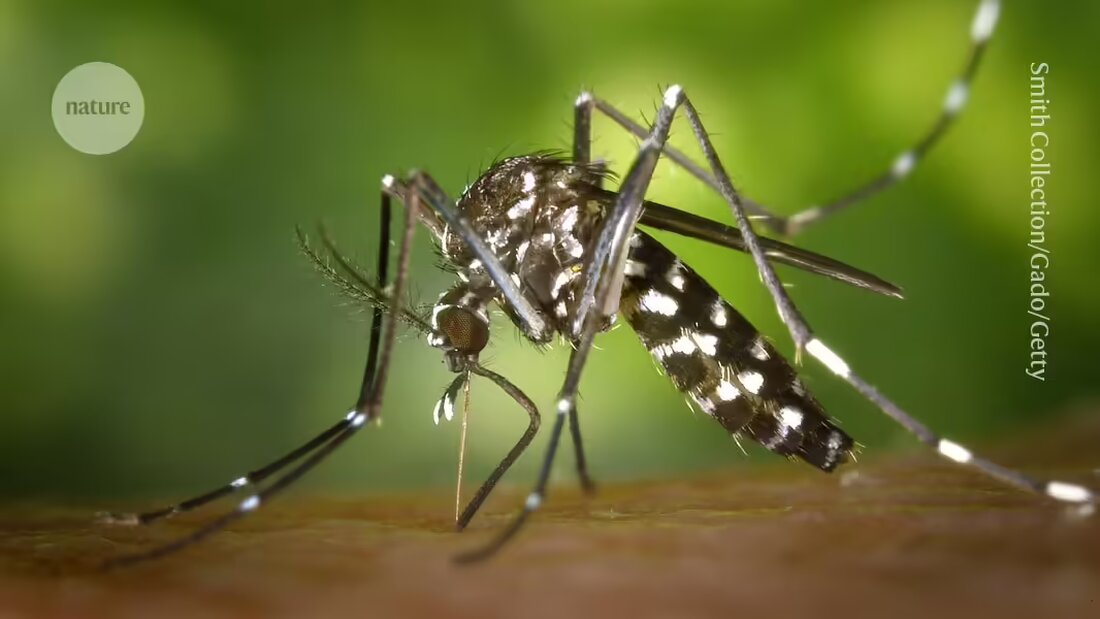Scientists warn that climate change is turning Europe into a breeding ground for mosquito-borne diseases. Longer summers, higher temperatures and heavy rainfall create favorable conditions for mosquitoes in regions where they previously could not thrive.
Figures released by the European Center for Disease Prevention and Control (ECDC) show that there have already been 715 locally transmitted cases of West Nile virus (WNV) in 15 European countries this year. This exceeded the number of cases compared to the same period last year and the 10-year average. As of September 4th, 51 people had died as a result of the infection.
“This is the new normal,” says Céline Gossner, a specialist in emerging and vector-borne diseases at ECDC in Stockholm, Sweden. The number of WNV cases is expected to rise into September and October, she adds.
Researchers advise people living in areas where outbreaks have been reported to take precautions to avoid mosquito bites.
“The problem we face is that new places could become hotspots of transmission that were previously unprepared for this,” explains Houriiyah Tegally, a genomics epidemiologist at Stellenbosch University in South Africa.
Deadly fever
About 20% of WNV infections result in West Nile virus fever, which causes fever, headache, vomiting, and fatigue. Neurological complications occur in less than 1% of cases and can include life-threatening swelling of the brain.
“Typically, most of us have an immune system that simply fights off the virus,” says Stephen Rich, a medical zoologist at the University of Massachusetts Amherst. However, older people and those with weakened immune systems are more susceptible to more serious complications, he adds. In Europe, most of the reported cases are in people over 65 years old.
TheCulex pipiensMosquitoes, which transmit WNV from infected birds to humans and other animals, especially horses, are native to Europe. The virus has been present on the continent since the 1950s. However, climate change has resulted in extended transmission periods, such that more regions are facing outbreaks, including areas where WNV infections were not previously reported. “When these viruses spread in communities that have no prior immunity, you can see large outbreaks,” says Rachel Lowe, a climate scientist at the Barcelona Supercomputing Center in Spain. A study published earlier this year concludes that climate change has facilitated the spatial spread of WNV across Europe. 1
Warm conditions have also led to the emergence of the Asian tiger mosquitoAedes albopictus, which transmits “tropical” diseases such as dengue fever and chikungunya, was able to spread. This species has now established itself in 13 European countries and has been introduced in 7 others. Both diseases are spreading as a result: this summer, Italy and France reported 22 locally transmitted cases of dengue, and one case of chikungunya was detected in France.
As the number of warm and wet days increases, mosquitoes - which thrive in these conditions - are spreading "to higher latitudes and also to higher elevations," Lowe says.
Although climate change is an important factor in disease outbreaks, it is not the only cause. Increased travel, particularly in the wake of the COVID-19 pandemic, promotes virus transmission across borders. The rise in dengue cases in Europe is partly a side effect of record outbreaks elsewhere in the world: South and Central America are currently battling their worst dengue season on record, with cases already about 230% higher in 2024 than at the same time last year.
A July preprint co-authored by Tegally found that dengue virus strains in Ethiopia closely resemble strains in the 2023 outbreak in Italy. 2“It is impossible to prove the direction of this movement,” says Tegally. But this “shows us that the world is very interconnected, and Europe could also act as a source of these arboviruses at some point, if not already, because there is local transmission.”
Avoid stitches
With the rise of mosquito-borne diseases in areas where they were previously rare, researchers are advising people to take care to avoid bites by using mosquito repellent, wearing long-sleeved, light-colored clothing and covering windows with mosquito screens.
Avoiding standing water in urban gardens, pots or flower vases also helps reduce the number of potential breeding sites, Lowe says. The Asian tiger mosquito is easily identified by its black-and-white striped legs, she adds.
Scientists also warn about the risk of asymptomatic carriers unknowingly contaminating blood banks with diseases like WNV when they donate blood. “Although the risk is in some ways well contained because we have many tests and procedures, it could affect the availability of blood and organ supplies,” says Céline. The US Centers for Disease Control and Prevention found that 190 blood donors in the United States tested positive for WNV this year.
Emerging risks such as these highlight the need for careful monitoring of mosquito-borne diseases, even in areas where they are not endemic.
“There is always a risk that a new vector-borne disease will emerge,” says Gossner. “We have to be prepared.”

 Suche
Suche
 Mein Konto
Mein Konto

